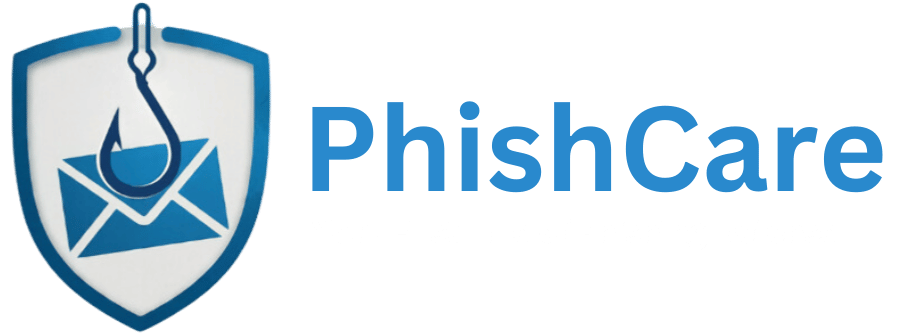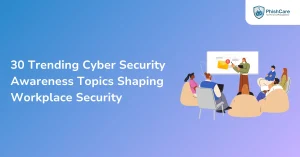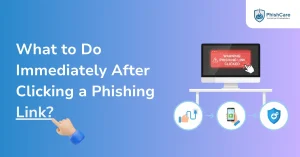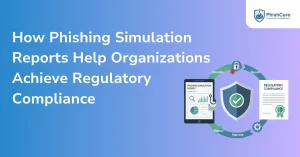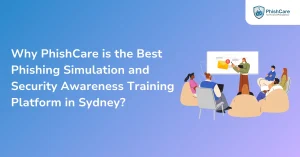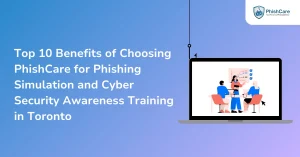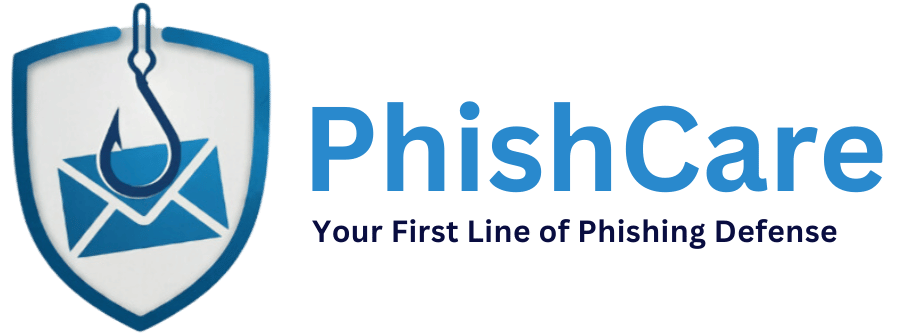Cyber threats have become increasingly sophisticated, posing a significant risk to individuals and organizations alike. Among these threats, phishing attacks stand out as one of the most prevalent and deceptive methods used by cybercriminals to steal sensitive information.
Phishing attacks can have devastating consequences, leading to financial losses, data breaches, and reputational damage. To combat this growing threat, organizations are increasingly turning to phishing awareness training programs.
Phishing awareness training is a proactive approach that educates individuals about the nature of phishing attacks, how to identify them, and how to respond appropriately. By equipping employees with the knowledge and skills to recognize and avoid phishing scams, organizations can significantly reduce their vulnerability to these attacks. This article will delve into the intricacies of phishing awareness training, exploring its importance, key components, and best practices for conducting effective training programs.
Here in this article we are going to discuss about What is Phishing Awareness Training in more detail.
Understanding Phishing Attacks

Before delving into the details of phishing awareness training, it is crucial to understand the nature of phishing attacks. Phishing is a type of cyberattack that uses deceptive emails, websites, or other forms of communication to trick individuals into divulging sensitive information, such as usernames, passwords, credit card details, or other personal data.Phishing attacks typically involve the following steps:
1. Deceptive Communication
Cybercriminals send out emails, text messages, or other forms of communication that appear to be from legitimate organizations or individuals. These messages often mimic the look and feel of trusted sources, making it difficult for recipients to distinguish them from genuine communications.
2. Enticement
The deceptive communication contains a compelling message or offer that entices the recipient to take action. This could be a request to update account information, a notification of a security breach, or a special offer that seems too good to pass up.
3. Information Gathering
Once the recipient clicks on a link or opens an attachment in the deceptive communication, they are typically directed to a fake website or form that is designed to collect sensitive information. The website or form may look identical to the real thing, but it is actually controlled by the cybercriminal.
4. Exploitation
Once the cybercriminal has obtained the sensitive information, they can use it for malicious purposes, such as stealing money, identity theft, or gaining access to corporate networks.
Importance of Phishing Awareness Training

Phishing awareness training is essential for organizations of all sizes because it helps to:
1. Reduce the risk of successful phishing attacks
By educating employees about phishing techniques and how to identify them, organizations can significantly reduce the likelihood of employees falling victim to these scams.
2. Protect sensitive data
Phishing attacks often target sensitive data, such as customer information, financial records, and trade secrets. By preventing phishing attacks, organizations can protect this data from being stolen or compromised.
3. Maintain a strong security posture
Phishing awareness training helps to create a culture of security within the organization, where employees are aware of the risks and take proactive steps to protect themselves and the organization from cyber threats.
Why PhishCare is the Best Phishing Awareness Training Tool

- Customizable Templates
- Awareness Module
- Assessment Test
- Comprehensive Tracking
- Graphical Dashboard Access
- Campaign Report
- Custom Domain Integration
4. Comply with regulations
Many regulations, such as the Payment Card Industry Data Security Standard (PCI DSS) and the Health Insurance Portability and Accountability Act (HIPAA), require organizations to implement security awareness training programs.
5. Enhance employee morale
By investing in phishing awareness training, organizations demonstrate their commitment to protecting their employees and their data. This can help to improve employee morale and create a more positive work environment.
Top 5 Best Phishing Awareness Training Providers

1.PhishCare
PhishCare is the best and leading Phishing Simulation Tool. designed to conduct realistic phishing tests and enhance employee awareness, helping organizations stay protected against evolving phishing threats.
With a phishing test, simulated phishing emails are sent to staff across your organization. The emails act like real phishing emails to get your employees to click links, enter passwords or perform other actions often requested by phishing emails.
The purpose of the test is to teach staff how to make mistakes and fall for simulated phishing emails and learn from their mistakes in a safe environment without the drastic consequences of a real phishing scam.
Key Benefits of PhishCare
1. End-to-End Tracking Capability
Track users attempting modules, completing assessments, and pass/fail statuses.
2. In-Depth Reporting
Analyze the performance of users, departments and more.
3. Follow-Up Training
Educate compromised users and launch ongoing training.
4.Fully Customized Templates
Access our library of ready-made templates, featuring trusted brands and real-time scenarios.
5. Security Checkpoint
Elevating Security Awareness through Targeted Assessments.
About PhishCare in Detail
1. Track Phishing Simulation Progress
Monitor phishing campaigns in real time and optimize security training with PhishCare
1. Email Open – Track when email are accessed.
2. Link Click – Identify users whol click on phishing links
3. Data Submission Tracking – Detect users who enter sensitive information
2. Awareness Training & Assessment
Empower employees with interactive training and comprehensive assessments.
1. Training Alerts – Instantly notify employees with awareness emails
2. Awareness Training Modules – Educate employees with focused videos and phishing assessments
3. Performance Tracking – Measure engagement, Assessments scores, and training completion tracking
3. Comprehensive Reporting
Gain valuable insights into your phishing simulation campaigns with comprehensive reports that help organisations improve their cybersecurity posture.
1. Simulation Summary – View phishing campaign results, including success rates and user responses.
2. Data Exports – Download raw datasets for in-depth analysis.
3. User Insights – Track interactions, clicks, and data submissions.
2. Proofpoint Security Awareness Training
Proofpoint is a well-established cybersecurity company, and their security awareness training reflects that expertise. They offer targeted training based on individual risk profiles and have strong threat intelligence integration.
3. Cofense
(Formerly PhishMe) Cofense focuses heavily on phishing simulation and incident response. They emphasize conditioning employees to report suspicious emails quickly and provide tools for security teams to analyze and respond to potential threats.
4. SANS Institute
While SANS is known for its in-depth cybersecurity certifications, they also offer excellent security awareness training programs. Their content is highly technical and well-regarded, making them a good choice for organizations with a strong security focus.
5. Curricula
Curricula stands out for its engaging and story-based training approach. They use animated characters and humorous scenarios to make learning about security awareness more enjoyable and memorable. They are a good option for organizations looking for a less formal training experience.
How to Conduct Phishing Awareness Training?

Here are the steps involved in conducting effective phishing awareness training:
1. Assess the Organization’s Needs
The first step is to assess the organization’s needs and identify the specific risks that it faces. This can be done by conducting a risk assessment or by reviewing past phishing incidents.
2. Develop a Training Plan
Once the organization’s needs have been assessed, a training plan should be developed. The training plan should outline the goals of the training, the content that will be covered, the delivery method, and the testing and assessment procedures.
3. Choose a Training Delivery Method
There are a variety of training delivery methods available, including:
- Online Training: Online training is a convenient and cost-effective way to deliver phishing awareness training.
- Classroom Training: Classroom training is a more traditional approach that allows for face-to-face interaction between the trainer and the employees.
- Simulated Phishing Attacks: Simulated phishing attacks involve sending fake phishing emails to employees to see if they will fall for the scam. This is a very effective way to test employee awareness and identify areas where additional training is needed.
4. Deliver the Training
Once the training plan has been developed and a training delivery method has been chosen, the training can be delivered to employees. It is important to make the training engaging and interactive to keep employees interested.
5. Test and Assess the Training
After the training has been delivered, it is important to test and assess the effectiveness of the program. This can be done by conducting quizzes, simulations, or simulated phishing attacks.
6. Evaluate and Improve the Training
Based on the results of the testing and assessment, the training program should be evaluated and improved. This will ensure that the training remains effective and up-to-date.
Conclusion
Phishing awareness training is a critical component of any organization’s cybersecurity strategy. By educating employees about the nature of phishing attacks, how to identify them, and how to respond appropriately, organizations can significantly reduce their vulnerability to these attacks. By following the steps outlined in this article, organizations can conduct effective phishing awareness training programs that protect their employees, their data, and their reputation.
FAQs: What is Phishing Awareness Training?
1. What exactly is phishing awareness training, and why is it so important these days?
Answer: Phishing awareness training is a program designed to educate individuals, primarily employees, about the various techniques used in phishing attacks. It teaches them how to recognize suspicious emails, websites, or messages and how to respond safely. It’s incredibly important now because cybercriminals are constantly evolving their tactics, making it harder to distinguish legitimate communications from malicious ones. Human error is often the weakest link in an organization’s security, and training aims to strengthen that link.
2. How often should we conduct phishing awareness training for our employees? Is a one-time thing enough?
Answer: A one-time training session is definitely not sufficient. Phishing tactics evolve rapidly, so regular, ongoing training is crucial. Ideally, employees should receive formal training at least quarterly, supplemented by regular reminders and simulated phishing exercises throughout the year. This continuous reinforcement helps keep security top-of-mind.
3. What are some key elements that make a phishing awareness training program effective?
Answer: Several elements contribute to an effective program. Firstly, the content needs to be engaging and relevant to the employees’ roles. Real-world examples, interactive exercises, and short, focused modules are more impactful than long, dry lectures. Secondly, the training should be tailored to the specific threats the organization faces. Finally, consistent reinforcement and testing are vital to ensure knowledge retention and behavior change.
4. Beyond simply recognizing phishing emails, what other skills or knowledge should employees gain from this training?
Answer: While identifying phishing emails is paramount, employees should also learn to recognize other forms of phishing, such as smishing (SMS phishing) and vishing (voice phishing). They should understand the importance of verifying requests for sensitive information through alternative channels, practicing good password hygiene, and reporting suspicious activity promptly. The training should foster a security-conscious mindset that extends beyond email.
5. How can we measure the success of our phishing awareness training program and know if it’s truly making a difference?
Answer: Measuring success involves tracking several key metrics. The most obvious is the click-through rate on simulated phishing emails – a lower rate indicates improved awareness. Other metrics include the number of reported suspicious emails, the reduction in successful phishing attacks, and employee performance on quizzes and assessments. Regularly monitoring these metrics provides valuable insights into the program’s effectiveness and areas for improvement.
